The journey of two families in two countries, split by a chain-link fence
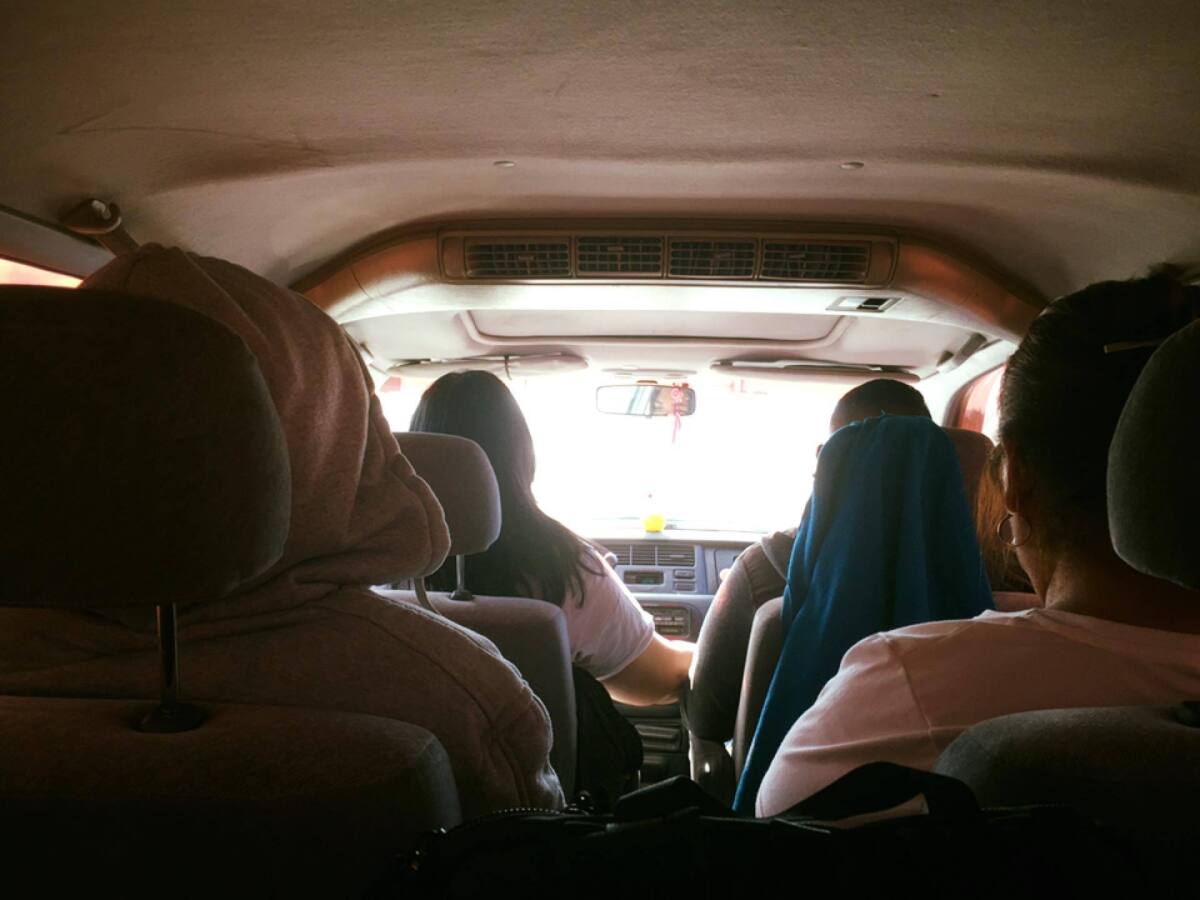
The journey begins during a chilly morning Monday in Las Cruces, N.M. The family of Maria Ceniseros Galvan piles into a minivan bound for the U.S.-Mexico border.
Reporting from Sunland Park, N.M, and Juarez, Mex. ‚ÄĒ On the Mexican side of the border, they drove a battered brown Chevy sedan, slogging through rutted pavement and dirt streets lined with cinder-block shanties and school buses ferrying workers to the maquiladoras ‚ÄĒ manufacturing plants that fuel the local economy.
On the U.S. side, they drove a spacious Honda minivan, zipping along Highway 10 past multiple Starbucks, a Wal-Mart and cattle corralled at a dairy farm.
They met at the U.S.-Mexico border ‚ÄĒ to the west of El Paso and its sister city, Ciudad Juarez ‚ÄĒ where a chain-link fence more than 15 feet high divides two worlds.
Si desea leer esta nota en espa√Īol, haga clic aqui.
Immigrant rights activists had planned a highly orchestrated event that included music, testimonials and the release of balloons. But for the families who assembled at the fence Monday, it was an intimate affair ‚ÄĒ a rare opportunity to meet and touch.
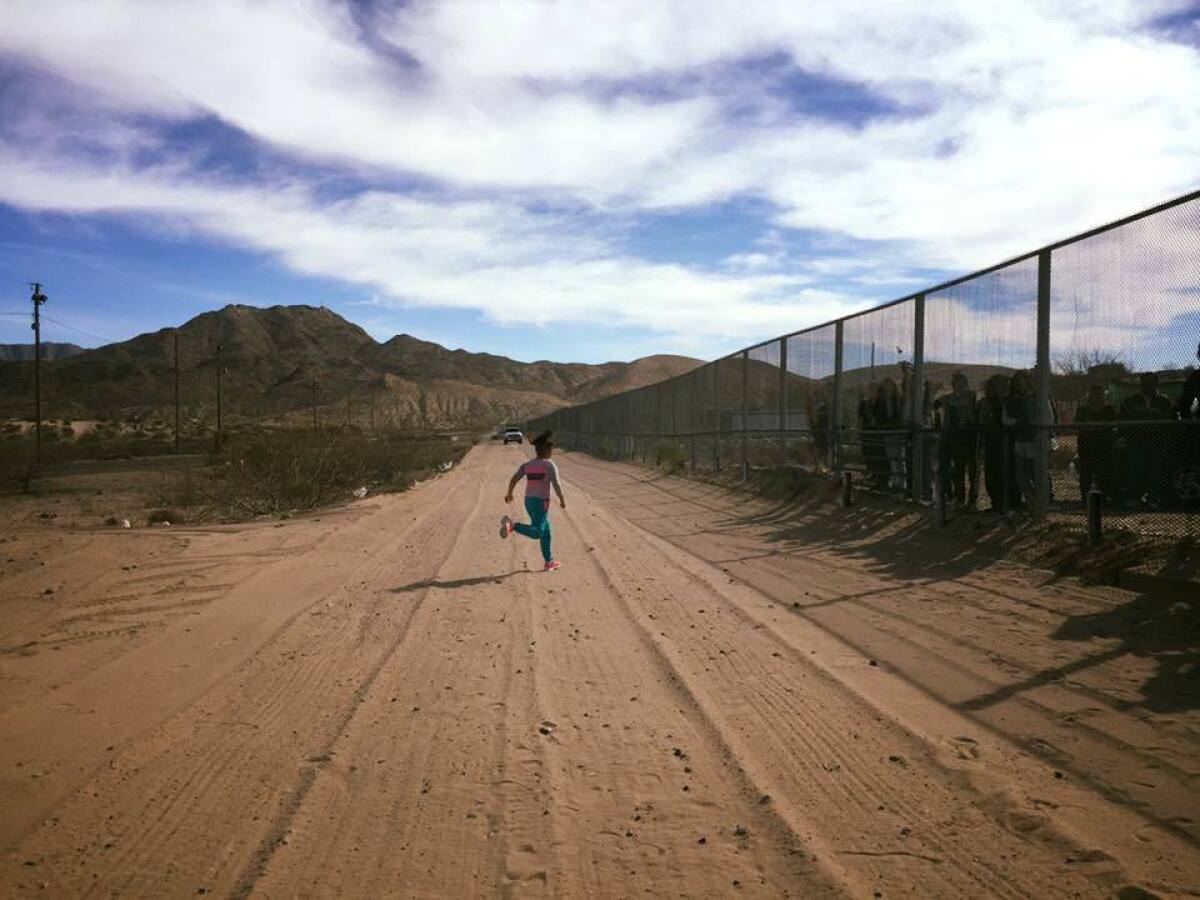
On the U.S. side, one of the youngest members of the family runs toward the fence and her family on the Mexican side.
The event, timed to coincide with Pope Francis’ visit to Mexico, drew about 300 people to a rural site near where Texas, New Mexico and Mexico meet. About 50 gathered on the Mexican side and 250 in the U.S. at a gravel lot that is also the site of an annual get-together for families split by the border.
‚ÄúHere they come!‚ÄĚ Sabino Montes, a 36-year-old who lives in Juarez exclaimed, pointing to his mother, Maria Ceniseros Galvan, in the crowd.
Ceniseros, the family matriarch who lives in Las Cruces, N.M., walked quickly toward the fence. Her eyes welled with tears as she approached. Granddaughter Stephanie Rodriguez, 8, sprinted toward the chain link.
‚ÄúHola! Hola!‚ÄĚ shouted Stephanie. She offered up a foot-long strip of heart-shaped pink lollipops.
In the crush of cross-border kisses and handshakes ‚ÄĒ or at least what could be accomplished through the small holes in the fence ‚ÄĒ the youngest of Ceniseros‚Äô grandchildren grew frustrated. Three-year-old Nahomy wanted to scale the barrier and join her cousins, especially Stephanie, with her heart-shaped candy.
‚ÄúDo you want a lollipop?‚ÄĚ Stephanie asked her, passing her the remaining half-heart through the fence.
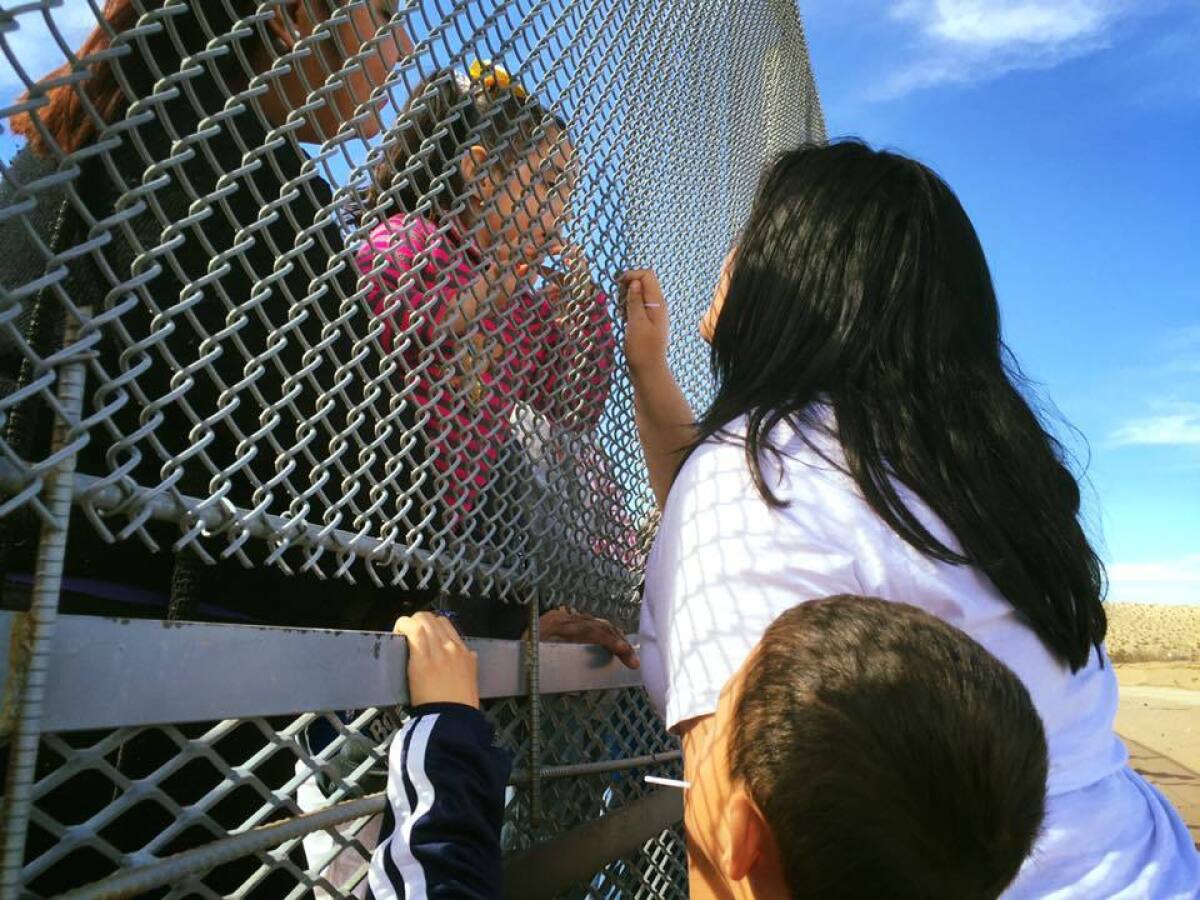
The aunt on the U.S. side, Valeria Montes, begs her niece on the Mexico side for a kiss. ‚ÄúUn beso!‚ÄĚ
Ceniseros, who is in the U.S. without legal status, won’t risk crossing into Mexico to see family there.
It didn‚Äôt used to be this way for Ceniseros and her family. At one time they all lived in Juarez, and Ceniseros and her husband, Graciano Montes, led a comfortable life with a big home and a successful store. But a series of violent events ‚ÄĒ including a robbery at gunpoint and extortion ‚ÄĒ forced them to flee in 2008.
The couple, their daughter, Valeria Montes, and other son, Ramiro Montes, entered the U.S. on a tourist visa before they overstayed and fell out of legal status. The son eventually returned to Juarez with his wife, Perla Trejo, and Nahomy, who was born in the U.S.
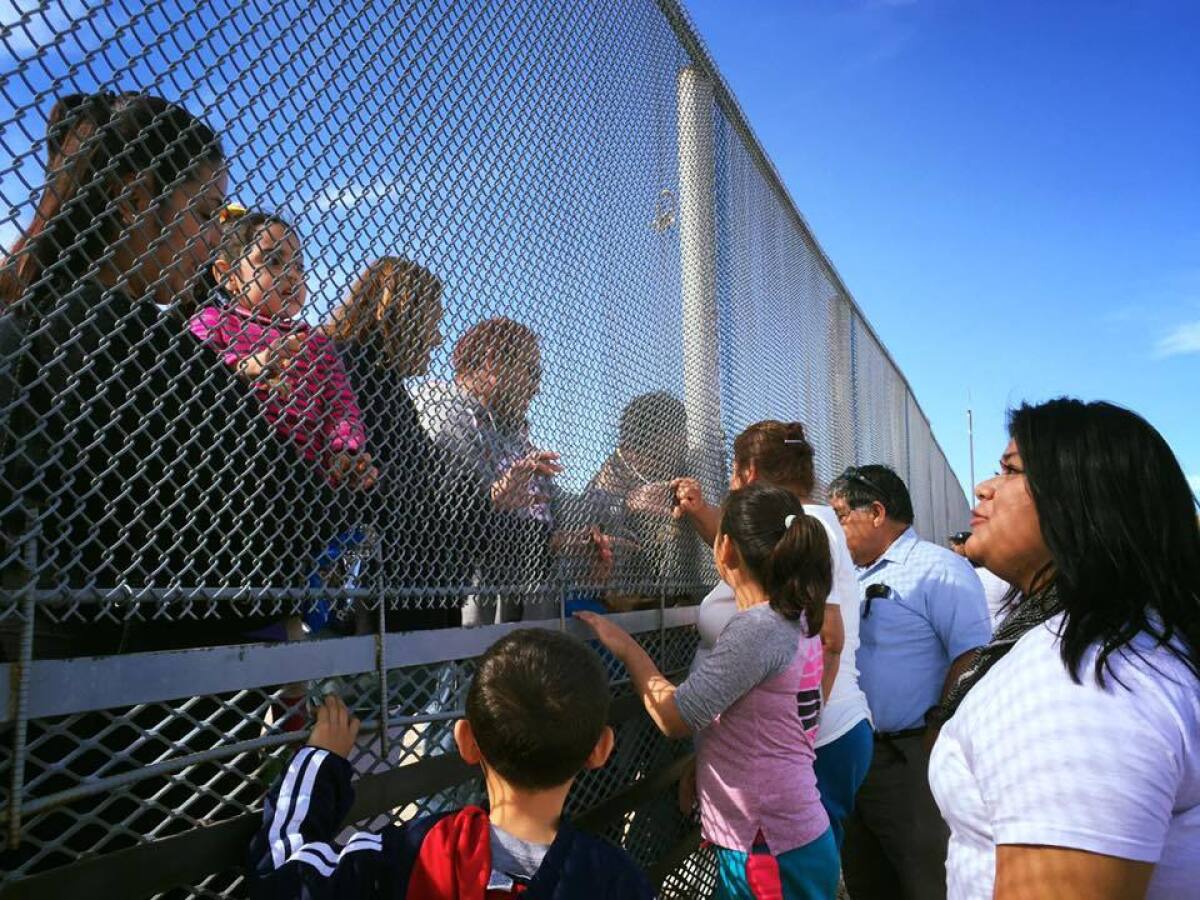
Valeria Montes and the rest of the family catch up through the international fence dividing the two nations.
At the border fence mothers sobbed, sisters shared laughs and brothers exchanged jabs.
The hourlong event gave families who are unable to travel to Juarez for the papal visit a chance to symbolically deliver a letter to the pontiff. They read the letter aloud in English and Spanish.
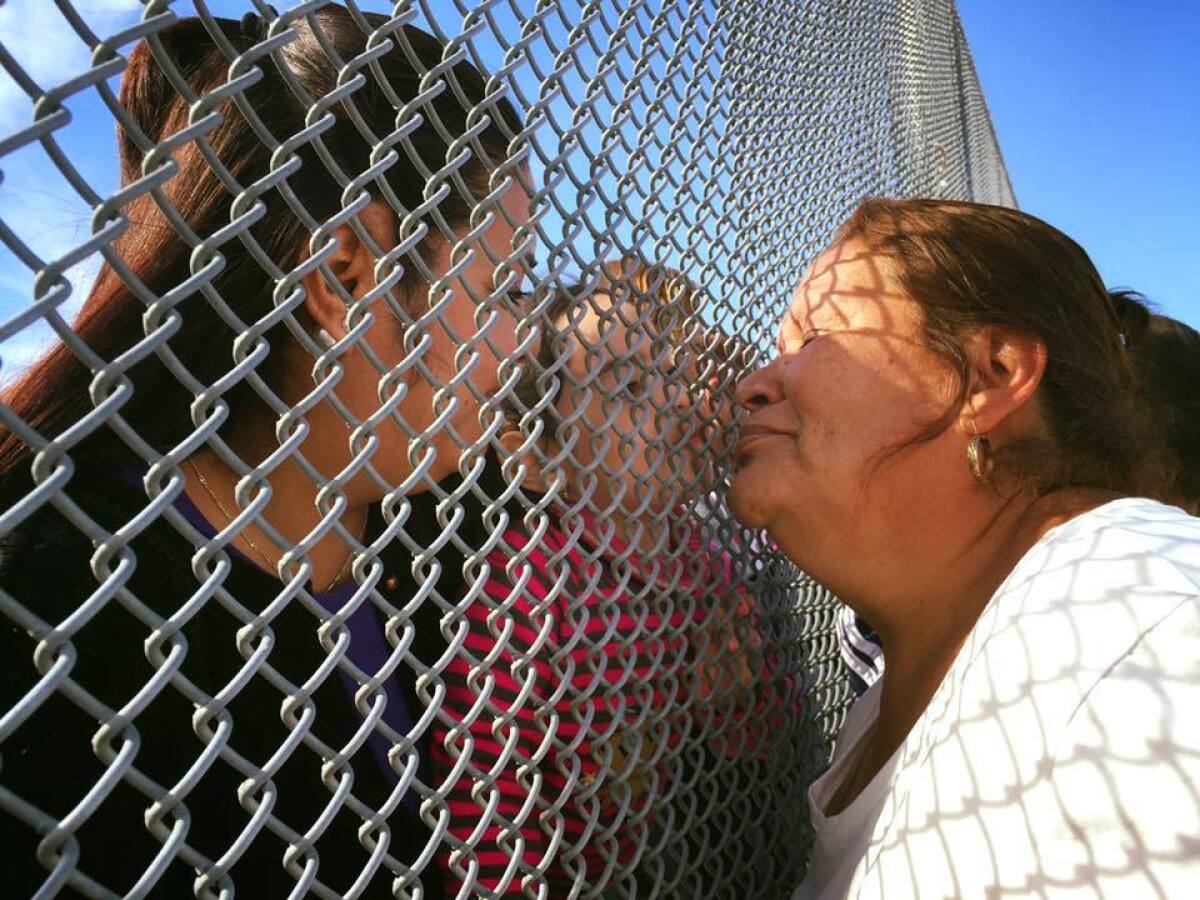
The matriarch of the family, Maria Ceniseros Galvan, who lives on the U.S. side, gets to visit with all her grandchildren in one spot ‚ÄĒ a rare occurrence.
‚ÄúWe welcome you to a border where hundreds of migrants die trying to reach the American dream,‚ÄĚ said Gabriela Castaneda, an organizer with Border Network for Human Rights, an El Paso-based nonprofit, which hosted the event. ‚ÄúWe ask for you to lift the spirit of immigrants.... Many of us are forced to flee our country because of violence.‚ÄĚ
Some protesters ‚ÄĒ including several women who are in the U.S. illegally ‚ÄĒ gave testimony just steps away from the fence and Border Patrol officials in their vehicles.
Ceniseros took the microphone and spoke to the crowd about her family on both sides of the international boundary. ‚ÄúI don‚Äôt think it‚Äôs just to have to see my grandchildren from across the border wall,‚ÄĚ she said.
But most of what she and others said on the U.S. side was barely audible on the Mexican side. Instead, families took advantage to catch up and make introductions.
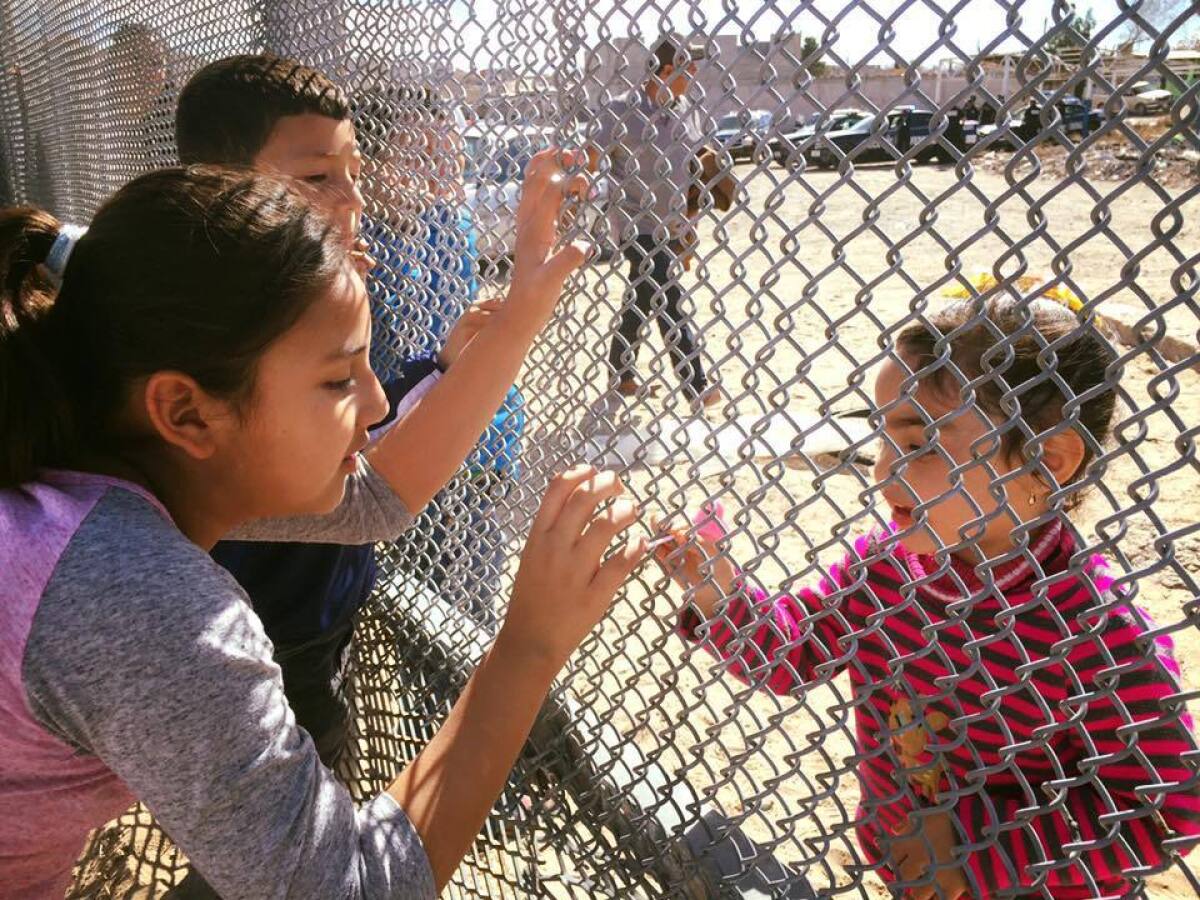
Cousins swap candy through the border fence.
‚ÄúThis is your cousin Charlie!‚ÄĚ said one woman in Spanish to two boys at the fence.
‚ÄúDo you have a boyfriend?‚ÄĚ one girl asked another.
Valeria Montes tried to coax a kiss from her niece Nahomy.
‚ÄúCome on. One kiss. Just one,‚ÄĚ she said, putting her lips to the chain-link fence.
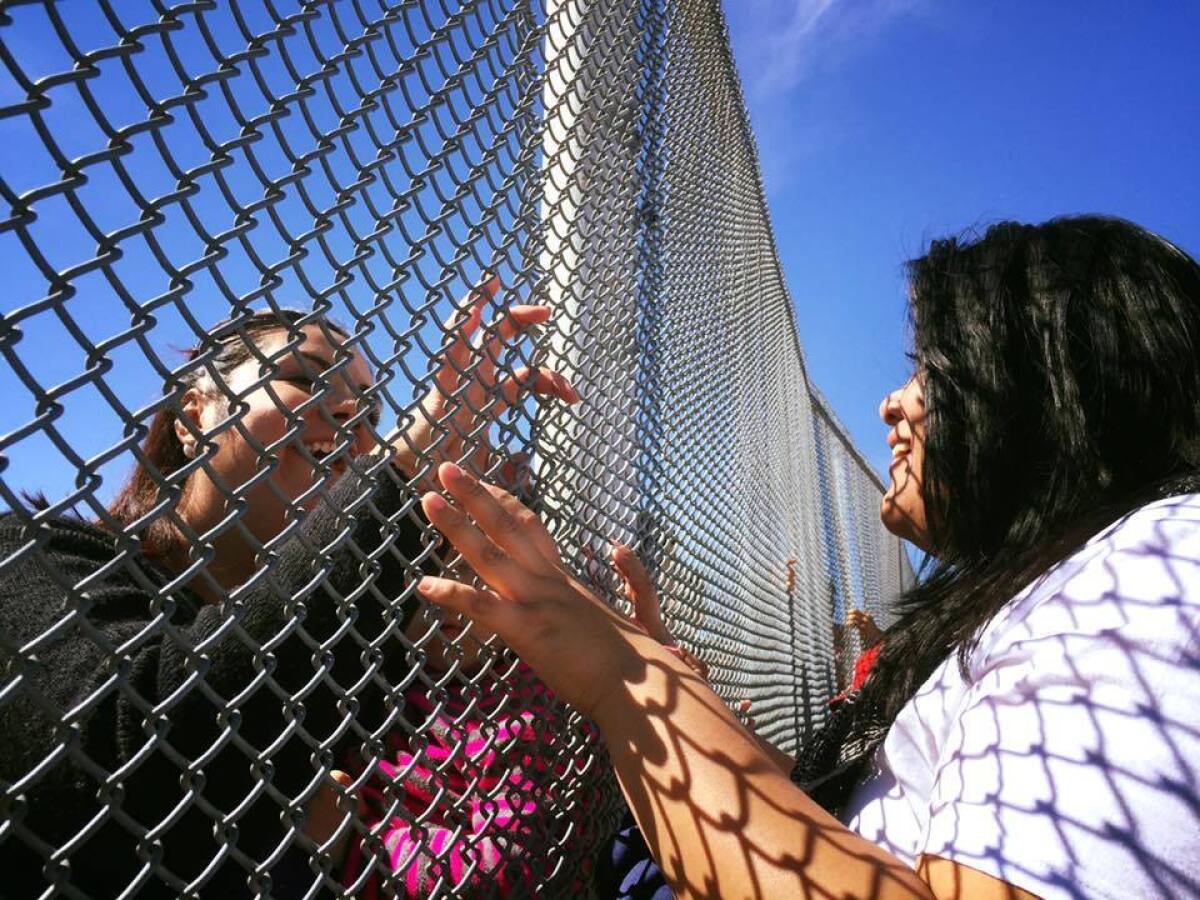
Meanwhile, sisters-in-law Perla Trejo and Valeria Montes share stories.
Nahomy’s mother, Perla Trejo, and Ceniseros discussed whether the 3-year-old should attend school in the U.S.
‚ÄúShe‚Äôs a U.S. citizen and she should take advantage of her rights as soon as possible,‚ÄĚ Ceniseros said.
Trejo simply smiled. She’s not ready to let go just yet. She doesn’t have legal status in the U.S. even after having lived there for several years. Having Nahomy start school in Las Cruces would mean separating daughter from mother.
A few steps away, other families were sharing cellphone photos through the fence, laughing and sobbing.
An elderly one-legged man in a sweat suit hobbled up to the fence on crutches as relatives looking toward the U.S. side exclaimed in Spanish, ‚ÄúHere comes Julie!‚ÄĚ Once the girl arrived, tearing up, he clasped her hand through the fence.
‚ÄúWe‚Äôre here, we just don‚Äôt have papers,‚ÄĚ said one of the young men with her.
Next to them, a woman in a denim jacket was being greeted by another young man across the fence: ‚ÄúHi, mother in law, how are you?‚ÄĚ
Farther down the fence, another man, Maximo Miranda, 46, greeted his adopted mother with a smile.
‚ÄúShe looks the same,‚ÄĚ he said, ‚Äúas if no time has passed.‚ÄĚ
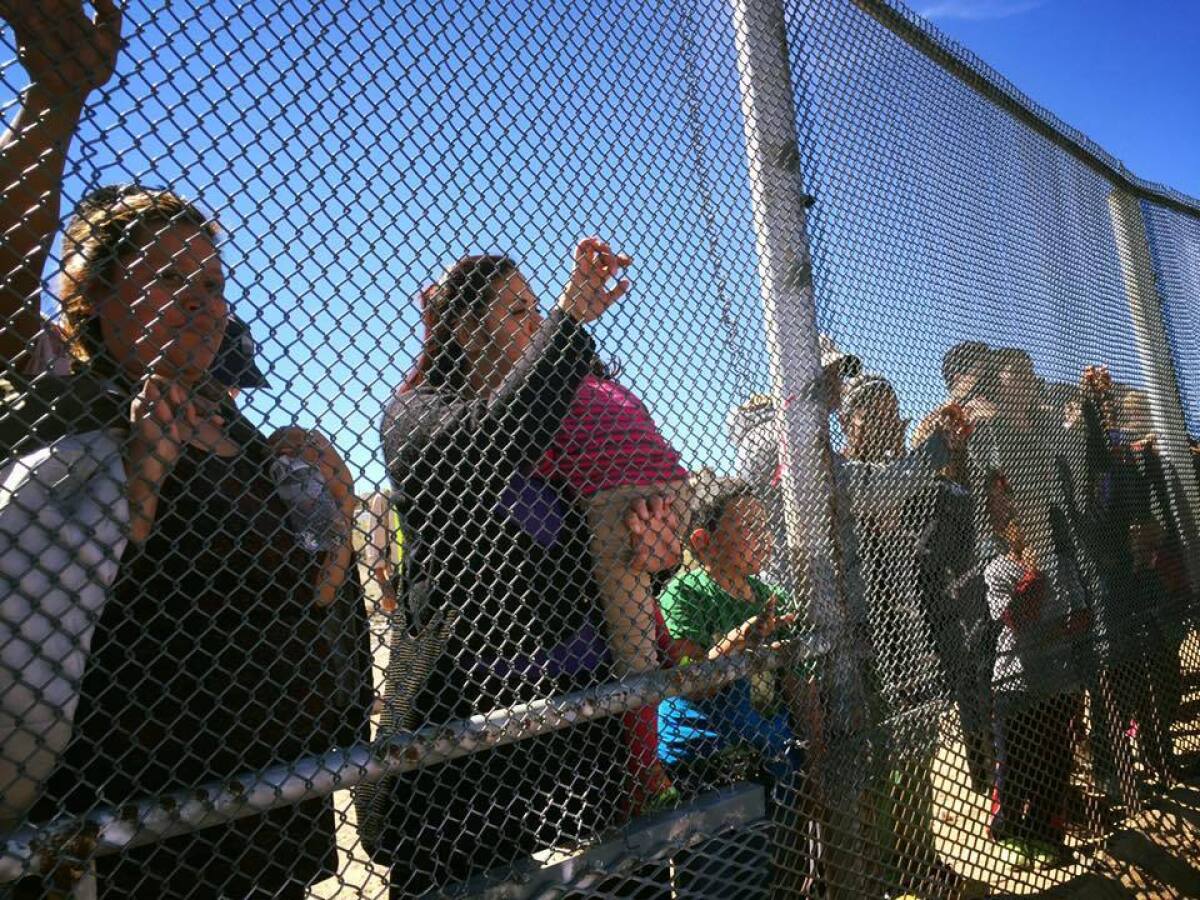
As time comes for goodbyes, the family on the Mexican side clutches the border fence.
About noon, Ceniseros and her family had to say their goodbyes. Ceniseros clutched the fence ‚ÄĒ still holding the hand of her son Sabino.
Ceniseros walked away, covering her face with her hands. Stephanie ran up to her grandmother, putting her arms around her waist.
‚ÄúI feel like my heart is going to rip through my chest,‚ÄĚ Ceniseros said.
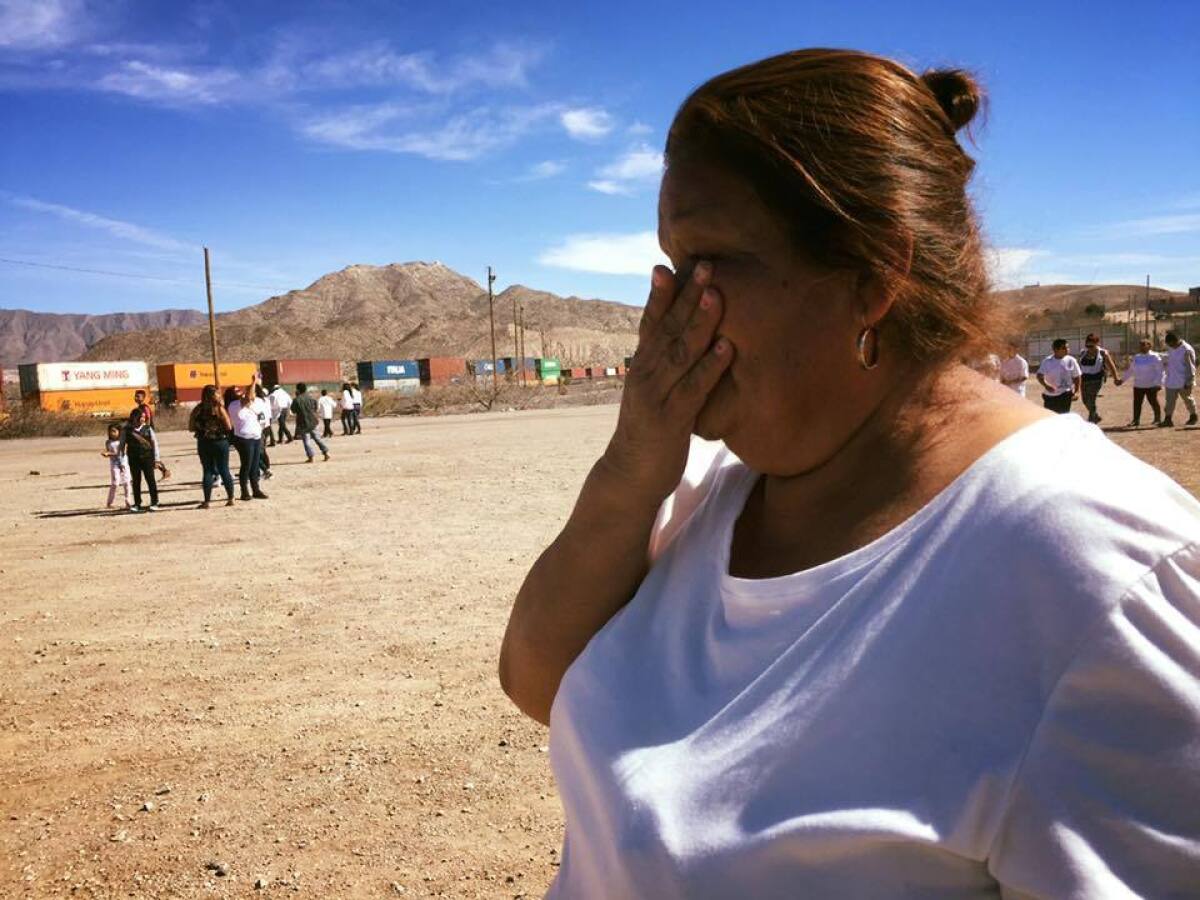
Ceniseros tries not to look back as she walks away from the border fence.
On the U.S. side, she was quiet on the car ride home, finally breaking the silence by noting that Sabino had lost his panza, or belly. Everyone laughed.
On the Mexican side, the car radio blared news of the pope’s imminent arrival.
Nahomy was fast asleep on the shoulder of her mother, who was thinking of her husband, who had to work and missed the reunion. She has friends whose parents died after they had been separated for years by the border.
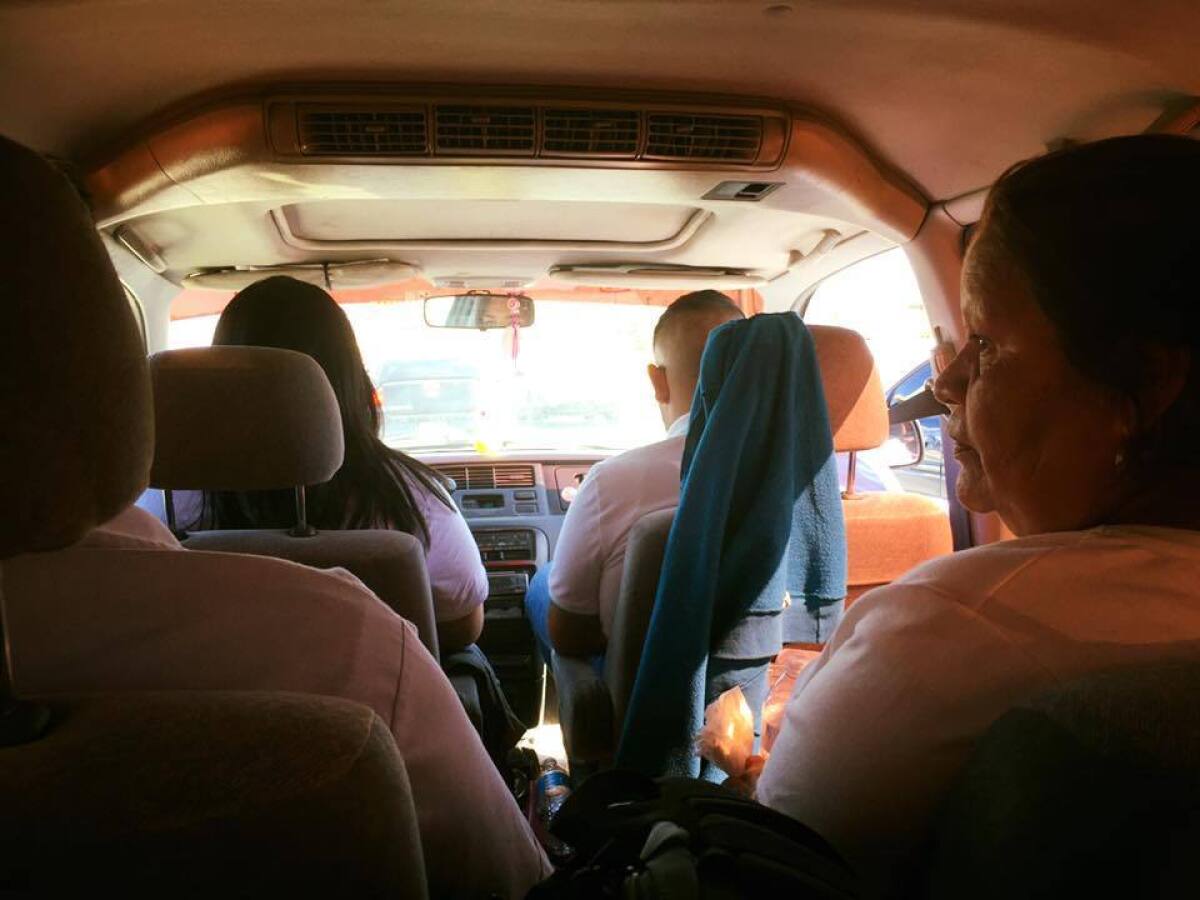
There is solemn silence during the drive back home to Las Cruces.
‚ÄúI hope soon we can be together, that they will give us papers so we can go or they can come,‚ÄĚ Trejo said.
Onward they went, away from the skyscrapers of El Paso, and their families, across the Rio Grande, and back home.
Carcamo reported from Sunland Park and Hennessy-Fiske from Anapra, Mexico.
Follow @cindythecarcamo and @mollyhf on Twitter.
ALSO
Pope Francis denounces the exclusion of Mexico’s native peoples
Migrant voices: On journey to north, ‚Äėyou can‚Äôt smile because there is no reason to‚Äô
Meet the deportee who fashioned the altar for Pope Francis’ cross-border Mass
More to Read
Sign up for Essential California
The most important California stories and recommendations in your inbox every morning.
You may occasionally receive promotional content from the Los Angeles Times.












